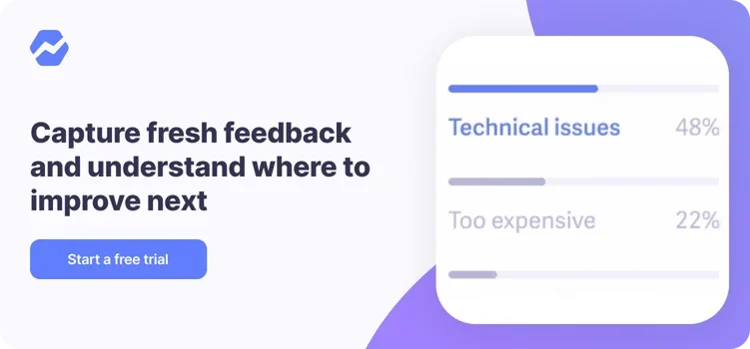Table of Contents

What’s it like building business on top of Stripe? What are the pros and cons? Would I do this again if I started from scratch? Long term, is it viable? What if Stripe moves in to my space, does that put me out of business? Do I recommend other people build on top of Stripe?
I’ve had and heard all of those questions and more, so I hope to offer some insight here in to what it’s been like for me the past 6 months building a business on Stripe’s platform.
In the beginning
When I started Baremetrics, I wasn’t looking to take advantage of Stripe as some sort of distribution strategy. It was just sort of a natural byproduct of the problem I was solving for myself (I needed business metrics, Stripe had all the numbers I needed).
In reality, I was extremely hesitant to launch any type of business on top of someone else’s platform. Seeing so many people build apps on top of Twitter only to be told “thanks for all your hard work but we don’t need you anymore” surfaced the big inherent risk of relying on another platform for your own business.
So I wasn’t terribly keen on the idea at first, but the fact was, I had a problem that needed solving, so I pushed forward with it.
Given the number of times I’ve been asked specific questions about building on Stripe, let’s tackle this in Q&A format.
What are the pros of building on Stripe?
The biggest pro for Baremetrics is the instant market of businesses available. I prefer building stuff for smaller niche’s instead of a huge market where it’s tough to define who the ideal customer is. Targeting Stripe users instantly narrows the focus and makes marketing a lot easier and more straightforward.
Stripe is very supportive of the companies that build on their platform. They’re aware that whenever someone integrates with them, it adds value to both Stripe and to their customers…so it’s a win for everyone.
The good folks at Stripe have helped promote Baremetrics in emails and tweets from day one and that support from them has been nothing short of amazing.
Also, being listed on their Integrations page drives a surprising amount of really targeted traffic.
What are the cons of building on Stripe?
The only con for us has been Stripe’s API rate limit. We’re 100% at their mercy when it comes to a customer’s initial data import. That translates to a less-than-ideal first-run experience as it can mean some customers have to wait as long as 24 hours for all of their data to import.
Most imports take less than an hour, but it’s still not ideal, especially when it comes to making a great first impression.
What if Stripe moves in to my space, does that put me out of business?
This is probably the riskiest part.
A heck of a lot of insanely smart people work at Stripe. They could relatively easily create something similar to Baremetrics and include it in their platform for free…which would theoretically put me out of business.
At this point, it’s a risk I’m willing to take. I’ve had a number of conversations with Stripe about this and right now, I’m comfortable with what I’m doing.
My goal is ultimately build a tool that lets you dig deep and understand your data in new ways to help you make wise business decisions, and the likelihood of Stripe building something as full-featured as where Baremetrics is headed is somewhat remote.
Also, I’m not trying to build a business that needs a $500M exit to make a bunch of VC’s happy. Staying self-funded means the only people I need to make happy are my customers and myself. The end.
Sure, I’d love to build (and plan to build) a business that makes a lot of money, but a “lot of money” is measured entirely differently when you’re the only one who’s measuring what that means.
In addition, there’s always the option to expand to other platforms (Braintree, Recurly, Chargify and yes…even PayPal).
Would I do this again? Is now the right time? Should you do it?
Absolutely. Right now Stripe is at this interesting spot where they’re starting to gain serious traction among businesses outside of the geeky tech world that need to accept payment, but they aren’t a mammoth corporation (cough PayPal cough).
So now’s a great time to get in and establish yourself for businesses who use Stripe. There’s definitely bit of first-mover advantage right now.
Can you build a huge business with dozens or hundreds of employees based solely on a Stripe-specific tool? Hard to say. I’d guess not. But I think the market is headed towards making that a possibility.
But for me, it’s the perfect sized market and has plenty of room to grow.
What are some tips to building on Stripe’s platform?
A few bits and pieces I’ve learned over the past 6 months of building on Stripe…
- Know the API docs inside and out. Stripe has an incredible API that makes an absurd amount of information available…but you’ve gotta know what’s available, and those API docs are the key to that.
- Use the API Mailing List extensively. Generally a dev from Stripe responds within 24 hours. I’ve had them respond in a matter of minutes sometimes. Great resource that gives you direct access the people that work on Stripe’s API.
- Use #stripe on Freenode. There’s usually someone from Stripe that’s monitoring their IRC chatroom and if you catch them at the right time, you can hash out any problems you’re having pretty quickly.
- Ask questions and make suggestions. Something doesn’t work like you think it should? Having trouble pulling off something with the API? Contact Stripe. Ask if it’s possible and make suggestions on ways it could be improved. They’re absurdely helpful.
Overall I really only have positive things to say about my experience thus far. Having had countless calls, video chats and face-to-face meetings with an array of folks at Stripe, I can honestly say I’ve never met a group of people so genuinely interested in making sure their product serves their customers and their market as well as possible.
Also, a major thanks to @patrickc, @collision, @JimDanz, @amfeng, @kitchenettekat and @cjc who have answered an endless stream of questions and told countless people about Baremetrics. Definitely grateful.
If you have specific questions about anything related to building on top of Stripe’s platform or joining the Stripe ecosystem, as it where, leave a comment or shoot me an email.



